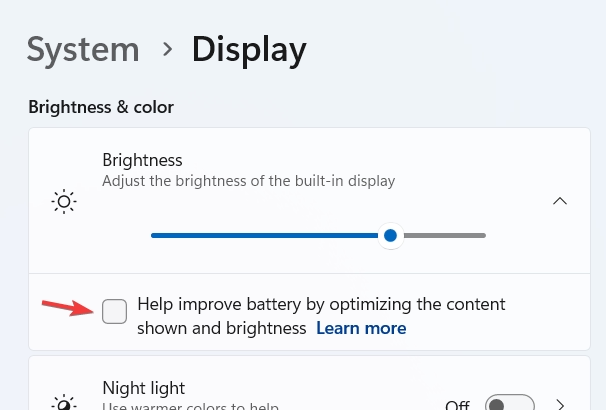This article explains how to enable or disable content adaptive brightness in Windows 11.
Newer laptop and tablet devices come with advanced graphics that allow Windows 11 to adjust the screen brightness and contrast based on the content displayed. This is known as Content Adaptive Brightness.
With this feature turned on, Windows provides optimal brightness and contrast levels, saving power and providing longer battery life. Sometimes, your computer might not display content at optimal quality, and the battery-saving arguments may not convince you to keep it on.
When your computer isn’t using the best quality content on your screen, you can turn off or disable content adaptive brightness to see if it fixes your issues.
How to turn off content adaptive brightness control on Windows 11
As mentioned above, the Windows content adaptive brightness control feature allows Windows to dynamically adjust the brightness of the content displayed on the screen based on the ambient light of the room in which you’re using it.
If you find this distracting and annoying, turn it off when using Windows 11. The steps below will show you how to do it.
Windows 11 has a centralized location for the majority of its settings app. From system configurations to creating new users and updating Windows, all can be done from the System Settings pane.
To get to System Settings, you can use the Windows key + I shortcut or click on Start ==> Settings, as shown in the image below:

Alternatively, you can search the toolbar’s search box to search for Settings. Then select to open it.
In Windows Settings, click System, and select Display on the right pane of your screen, as shown in the image below.

On the Display settings pane, under the “Brightness & color” section, clear the box next to “Automatically adjust contrast based on the display content to help improve battery.”

The changes are to happen immediately. Close the Settings pane, and you’re done.
That’s it!
Conclusion:
- Content Adaptive Brightness can enhance your viewing experience by optimizing brightness and contrast based on content.
- Disabling this feature may resolve display issues or distractions while using specific applications.
- Easily manage the Content Adaptive Brightness settings through the Windows 11 System Settings.
- Remember, you can toggle this feature based on personal preference, allowing you to customize your experience.
- Keeping the feature on can improve battery life, while turning it off can enhance video and visual quality.

Leave a Reply to Callum Tindall Cancel reply